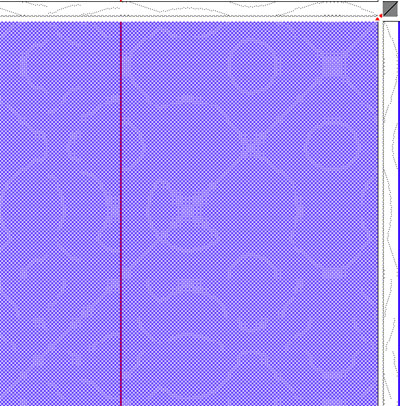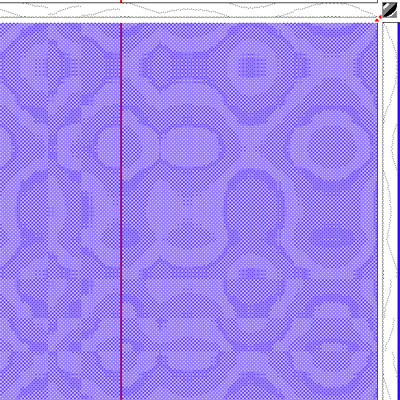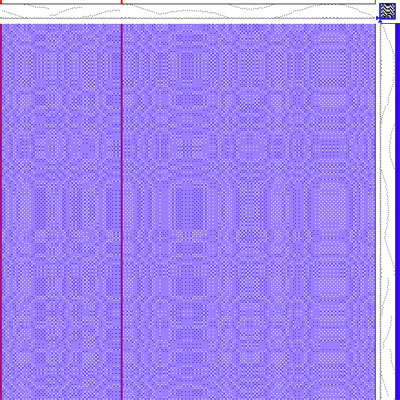Following Bonnie’s advice, I tried playing with interleaved drafts and block substitutions in Fiberworks PCW. I couldn’t get interleaved drafts working since the interleaving would be A-B-A-A-B-A (where A is one draft and B is the other) and I couldn’t figure out how to do that in PCW, but the block substitutions worked great. So I drew some semirandom lines (a set of circle-like curves, a set of jumpy (“flea”) lines, fiddled around and got it into the huck lace network, and produced the following (all treadled as drawn in, for the sake of simplicity):
First I used the standard “straight” tie-up that came with the block substitution:
 (Here is the .wif file, if you are interested in examining it more deeply, since the tie-up and threading/treadling are nearly impossible to see in the photo).
(Here is the .wif file, if you are interested in examining it more deeply, since the tie-up and threading/treadling are nearly impossible to see in the photo).
And then I tried it by modifying swaths of the tie-up to produce a black-and-white double curve:

You can see here that the basic design line remains the same, but the way it’s filled in is much more complex and exciting. (Here’s the .wif file.)
And then I tried it with the random tie-up I used in my last post:

You can see that the design line is radically different, not too surprising since the line of the tie-up is also quite different. I’m still trying to figure out the influence of , say, diagonal lines vs. horizontal/vertical lines vs. curves in the tie-up – I imagine knowing this will come in handy in later experiments in network drafting. At any rate, here’s the .wif file.
I have been making rapid progress on the last of the color-change shawls – about a foot and a half woven so far – and am hoping to finish it up today. Later today I will also dye the yarn for the samples for the cashmere coat – which will be next on the loom. I’m also going for a bike ride – a short one, since training season is just beginning!
(I have not yet decided whether to do AIDS Lifecycle, but have decided to train – and sew – as if I am, since otherwise I’ll have no hope of finishing either training or sewing in time. If things get too intense in the spring, I can always drop out. I’ll do my fundraising later, I’m not seriously worried about raising the minimum since I have a large donor base (I hope!).)
